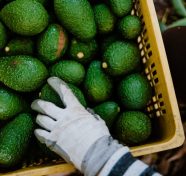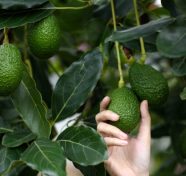It’s been widely reported that during the last decade avocado consumption has skyrocketed, leading production and trade in the same direction.
The increase in demand for the so-called green gold has pushed the cost of the fruit upwards, making it a premium product within fresh produce, highly desired by consumers and especially producers because of its profitability.
According to a new report by Rabobank which analyzes data between 2012-2022, the global avocado market is now worth about US$18 billion.
“In the next few years, the avocado trade will continue to grow, but the market will be more competitive, forcing operators to be not only more efficient but also increasingly sustainable. As availability is expected to be steady, consumers will benefit from relatively affordable prices in key markets, increasing the popularity of this super fruit,” saidthe report.
In just 10 years, global avocado production has increased at a rapid pace with a compound annual growth rate of 7% to a total of 8.4 million metric tons in 2022.
The report covers key global producing regions like Mexico, which currently accounts for 30% of global avocado output with a 6% increase in the last decade.
Apart from Mexico, the top ten global producers include three other Latin American countries, Chile, Colombia, and Peru. In the case of Colombia and Peru, production has increased by 15% and 12% respectively, currently covering 12%, and 9% of global production.

On the other hand, the U.S. back in 2012 appeared in the top ten list of exporting countries but has since been relegated by countries like Spain, Australia, Israel, and Kenya which have all increased their production.
This geographical diversification amongst top producers guarantees a global year-round supply of the fruit as they have complementary harvesting seasons.
Main players in exports and imports
Even though the average annual exports increased by 8%, in 2022, they decreased by 5%, “as increments in shipments from Peru, Kenya, South Africa, and Morocco could not offset lower production and exports from Mexico, Spain, Chile, and Israel.”
Mexico remains the main exporter, surpassing 1m metric tons in 2022.
Exports from Chile, Colombia, Kenya, Peru, and Spain have also climbed, led by Peru with a 22% compound annual growth rate.
Kenya, the only African country on the list increased their exports by 15% between 2012 and 2022, they are currently exporting close to 2 million metric tons of avocados per year.
Colombia, which did not export any avocados in 2012, recently entered the market reaching 99,000 metric tons in 2022.
In terms of imports, the U.S. is still the main importer of avocados in the world with a ten-year increase of 8% and Mexico as its main provider.
Chile led the growth in imports among the top 10 importing countries, from 1,000 metric tons in 2012 to 59,000 metric tons in 2022.

Sustainability
The avocado industry can’t be reviewed without referring to the issue of sustainability. It has become an important topic for producers, exporters, importers, and consumers, who are all concerned about how sustainable the industry is, especially with regard to its water usage.
The report put this issue as a part of the agenda, indicating that the industry has been “upping its efforts to educate consumers on the nutritional benefits of avocados as well as its sustainability issues.”
Rising temperatures combined with the high water demand that avocado production entails have forced farmers around the world to advance in new and advanced irrigation systems to optimize water use.
According to the report, in tropical countries, like Colombia or the DR, production is mainly rainfed. However, in countries like Israel, Chile, and South Africa, growers require irrigation to supplement the rainfall that is limited to specific months.







